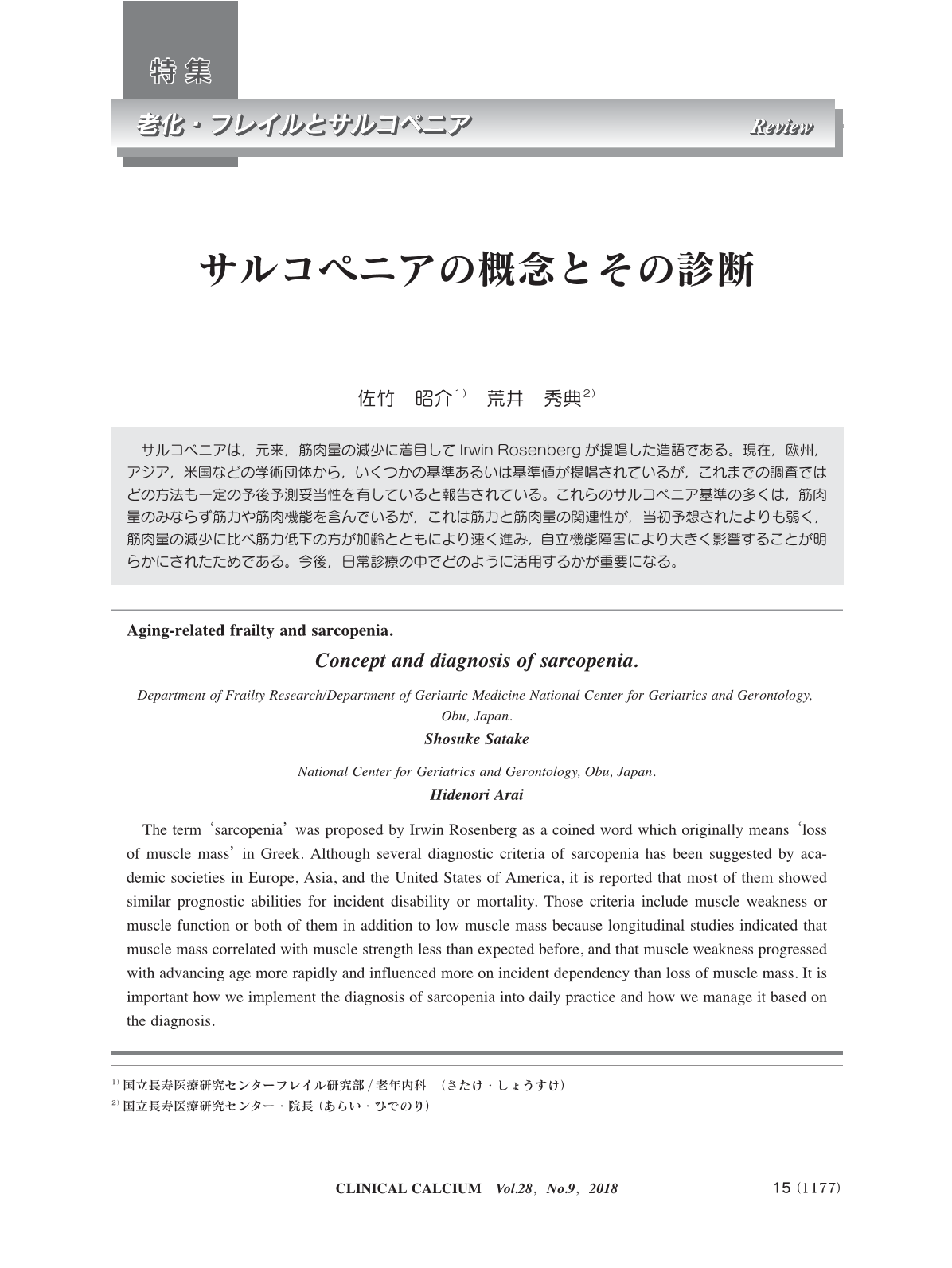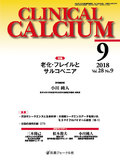Japanese
English
- 有料閲覧
- Abstract 文献概要
- 1ページ目 Look Inside
- 参考文献 Reference
サルコペニアは,元来,筋肉量の減少に着目してIrwin Rosenbergが提唱した造語である。現在,欧州,アジア,米国などの学術団体から,いくつかの基準あるいは基準値が提唱されているが,これまでの調査ではどの方法も一定の予後予測妥当性を有していると報告されている。これらのサルコペニア基準の多くは,筋肉量のみならず筋力や筋肉機能を含んでいるが,これは筋力と筋肉量の関連性が,当初予想されたよりも弱く,筋肉量の減少に比べ筋力低下の方が加齢とともにより速く進み,自立機能障害により大きく影響することが明らかにされたためである。今後,日常診療の中でどのように活用するかが重要になる。
The term ‘sarcopenia’ was proposed by Irwin Rosenberg as a coined word which originally means ‘loss of muscle mass’ in Greek. Although several diagnostic criteria of sarcopenia has been suggested by academic societies in Europe, Asia, and the United States of America, it is reported that most of them showed similar prognostic abilities for incident disability or mortality. Those criteria include muscle weakness or muscle function or both of them in addition to low muscle mass because longitudinal studies indicated that muscle mass correlated with muscle strength less than expected before, and that muscle weakness progressed with advancing age more rapidly and influenced more on incident dependency than loss of muscle mass. It is important how we implement the diagnosis of sarcopenia into daily practice and how we manage it based on the diagnosis.



